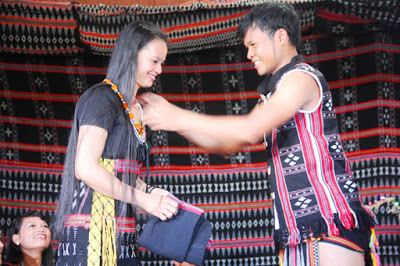
The Co Tu people, an ethnic minority group residing in the mountainous regions of central Vietnam, celebrate their weddings with a vibrant tapestry of rituals that transcend the union of two individuals, symbolizing the forging of bonds between families and clans.
Wedding ceremonies of Cơ Tu People
The first is the Ganoo Ceremony (Proposal ceremony), which is mostly performed by a matchmaker. Some time after the engagement ceremony is the wedding ceremony. The length of time between the engagement ceremony and the wedding depends on the two families, sometimes mainly depending on the village elders, because if the village elders cannot ask permission from the gods during the year, the wedding will have to wait until the next year.
The Bhrớ Bhiêc (wedding ceremony) of the Cotu people is held on a relatively large scale. Just like the Kinh people, after the wedding ceremony, the Cotu people have the custom of bringing the bride to her husband’s house (Duong Acoon Chodong CuDik).
The wedding customs of the Co Tu people are different from those of the Kinh people in the delta in some points. Especially, they have one more ceremony, held three years after the wedding, which is the husband and wife’s coming-of-age ceremony or “Ăn Zum” ceremony.
The “Ăn Zum” ceremony actually includes 2 separately ceremonies because before the official “Ăn Zum” ceremony takes place, there must be a negotiation, usually between relatives and village elders, and it is called the “Ăn Zum” decision ceremony (Predăh Zum). In fact, the “Ăn Zum” ceremony is almost like another wedding ceremony.
Rituals of each wedding ceremony
After the matchmaker has determined a wedding date, in addition to betel and wine, the groom’s family must also give the bride’s family jars (Ché). These jars will later become jars containing precious objects for the new couple. The engagement ceremony was attended by dozens of old and young people, but after choosing the wedding date, the groom’s family must choose people who are older, knowledgeable, reasonable, and especially know how to respond, to go to the bride’s house. These people, through logic singing (hát lý), will negotiate everything with the bride’s family. On the contrary, the bride’s family must also choose reputable people with the wisest arguments to respond to the groom’s family. Two sides exchange words through hát lý like that around jars of wine. This is the unique cultural beauty of the Co Tu people.
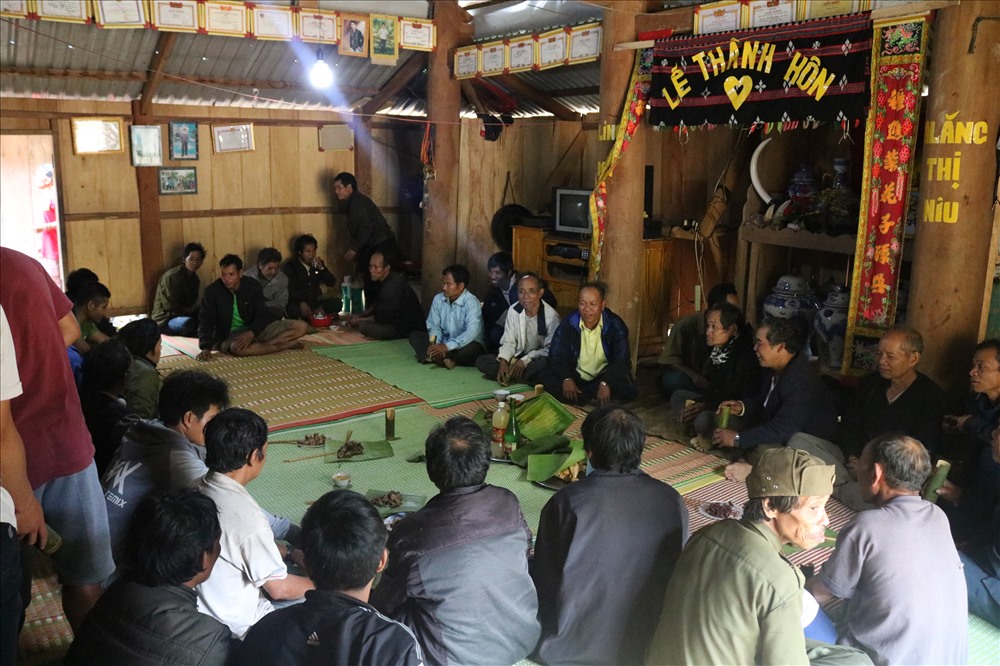
On the wedding day, a group of people from the groom’s family carry jars of Tr’đin wine, rice, sticky rice, lead a buffalo, and carry a wooden coffin… and come to the bride’s house. The wedding took place according to customary law. The buffalo is tied to a tree planted in front of the house. Everyone attending the wedding dance together to the rhythm of gongs. After the simple rituals of the homeowner (the bride) and the village elders, the buffalo stabbing ceremony will occur. A muscular man leads the dancing group, holds a sharp spear in his hand, pierces the buffalo’s throat. If the buffalo collapses after one attack, it is a good omen. If not, the dancing group continues to follow the rhythm of the gongs, in a circle, and continues stabbing the buffalo, until the buffalo can’t hold on anymore and collapses. The buffalo meat is immediately cut into pieces and reserved for cooking and regaling everyone. The remaining meat is divided equally to all villagers on the bride’s family side.
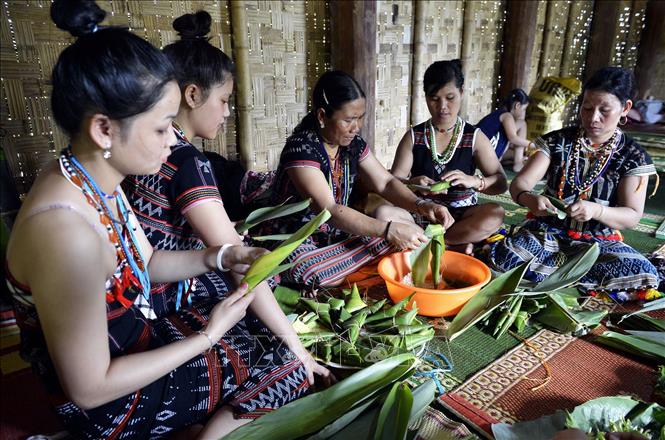
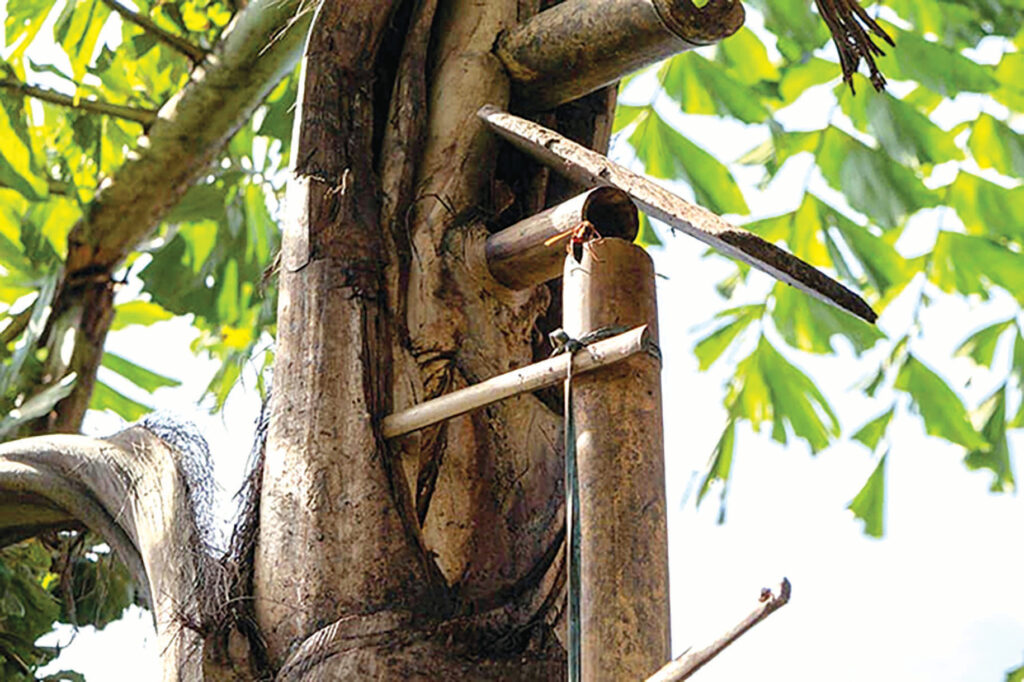
Three years after the wedding is the “Ăn Zum” ceremony (coming of age ceremony). The bride’s family slaughters a chicken, cooks a tray of sticky rice, and places them in front of the altar. Parents of both sides are present. The homeowner worships the gods, praying for the young couple to be healthy, wealthy, and have many children. After the ceremony, sticky rice and chicken are reserved for the young couple. They sit, eat, and feed each other, then drink from the same bowl of wine.
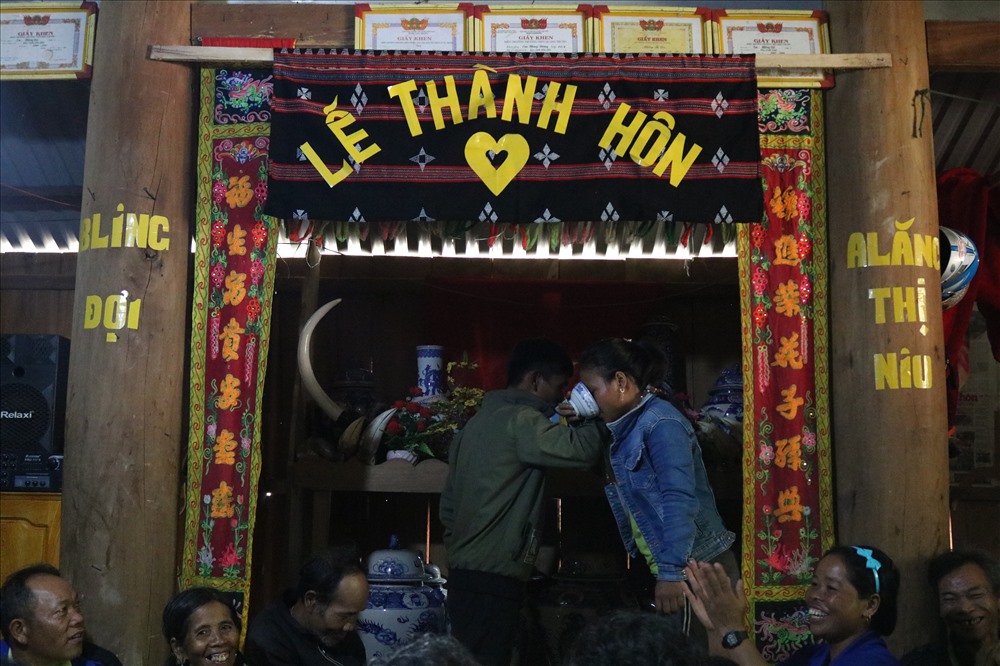
After the “Ăn Zum’ ceremony, the girl must now live with her husband’s family and no longer go to her parents’ house. The wooden coffin that was carried by the groom’s family to the bride’s house on the previous wedding day is for showing the filial piety of the bride to her parents, because after the “Ăn Zum” ceremony she is no longer allowed to visit or take care of her parents. Even if her parents die, she won’t be there to comfort them or listen to their last words or advice. The wooden coffin is a daughter’s filial gift, so that her parents can be warm when they die, even without her by their side.
The wedding rituals of the Co Tu people embody their deep respect for tradition, their harmonious relationship with nature, and the paramount importance they place on family and community. Witnessing these vibrant celebrations offers a glimpse into the rich cultural tapestry of Vietnam’s ethnic minorities.
We hope this information helps you learn more about the beautiful and unique wedding customs of the Co Tu people in Vietnam!
Vietnam warmly welcomes you to enjoy Vietnamese cuisine and culture and to make your trip go smoothly as the very first step, make your plan into reality by obtaining a Vietnam visa at https://www.vietnam-evisa.org.